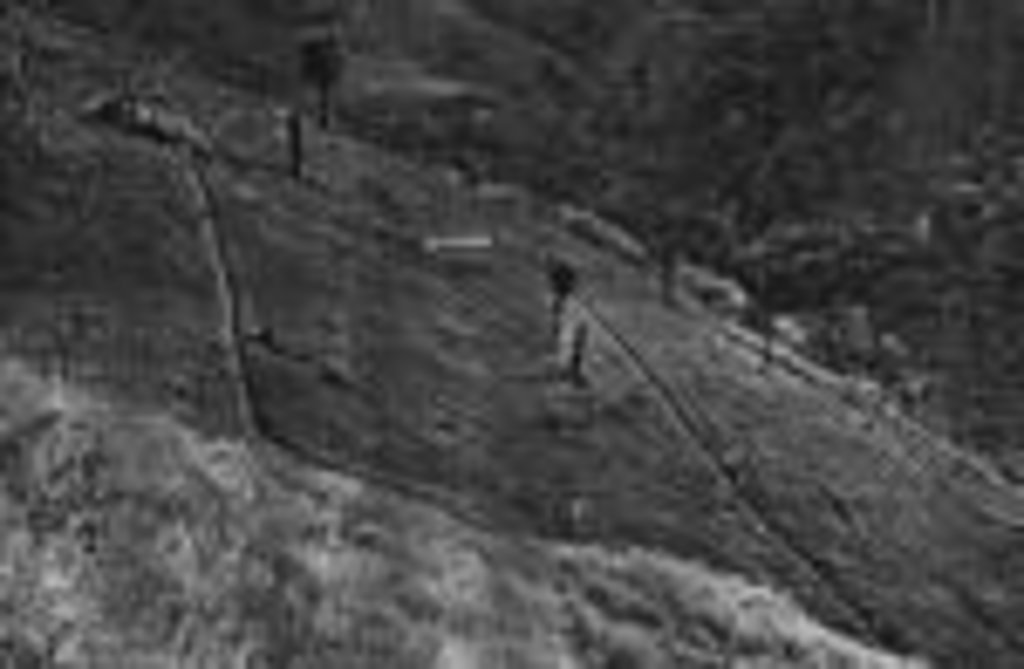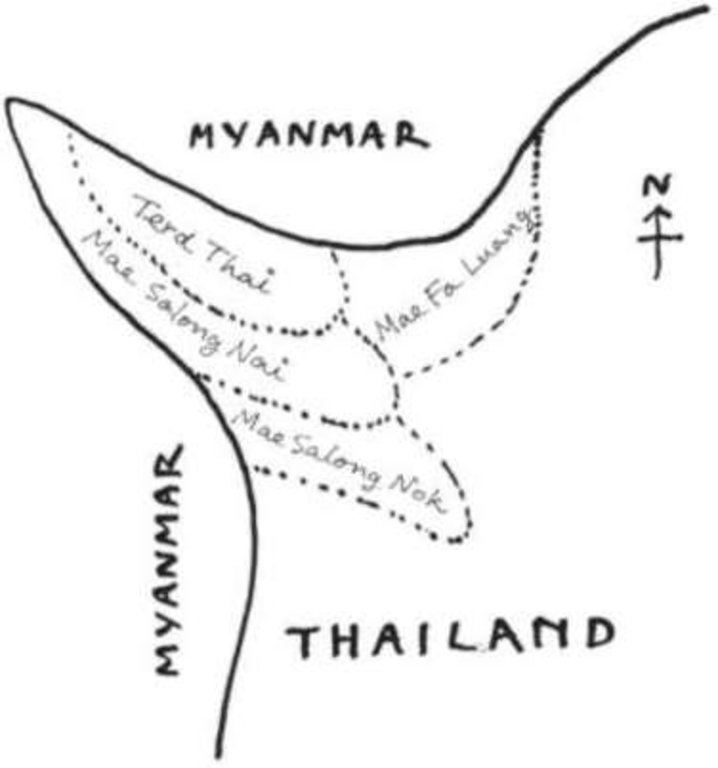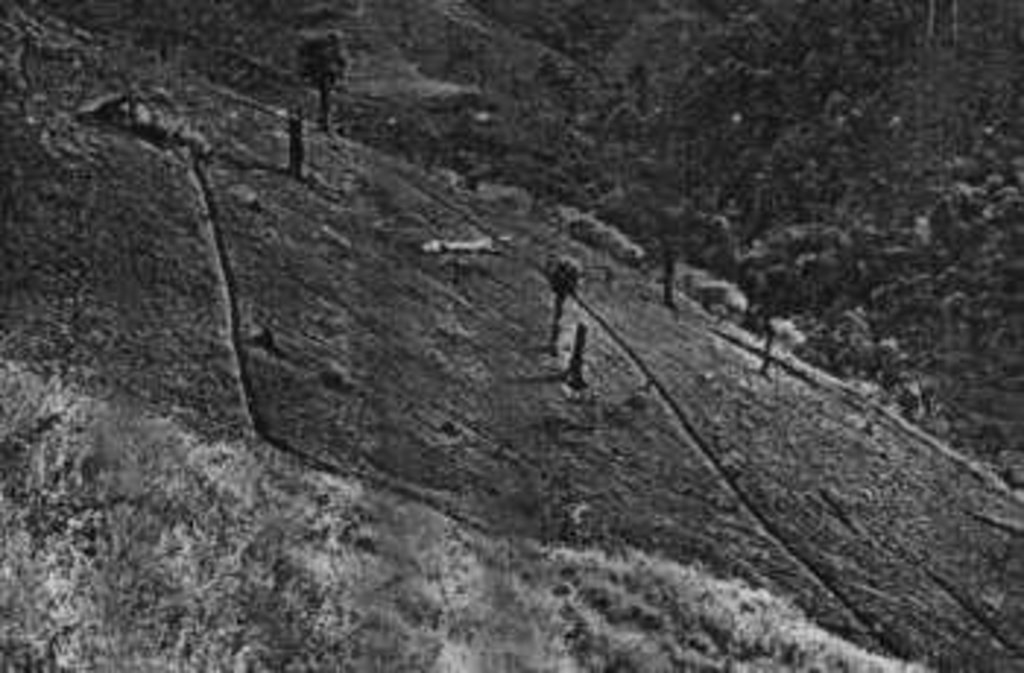Cut-off drain [泰国]
- 创建:
- 更新:
- 编制者: Samran Sombatpanit
- 编辑者: –
- 审查者: Fabian Ottiger
approaches_2622 - 泰国
查看章节
全部展开 全部收起1. 一般信息
1.2 参与方法评估和文件编制的资源人员和机构的联系方式
SLM专业人员:
有助于对方法进行记录/评估的机构名称(如相关)
World Association of Soil and Water Conservation (WASWC) - 中国有助于对方法进行记录/评估的机构名称(如相关)
Swiss Agency for Development and Cooperation (DEZA / COSUDE / DDC / SDC) - 瑞士1.3 关于使用通过WOCAT记录的数据的条件
编制者和关键资源人员接受有关使用通过WOCAT记录数据的条件。:
是
1.4 SLM技术问卷的参考

Cut-off drain [泰国]
Cut-off drain is a drainage ditch dug to quickly drain water out of sloping agricultural land.
- 编制者: Unknown User
2. SLM方法的描述
2.1 该方法的简要说明
This approach is the 'way' or 'how' the cut-off drain has been implemented on steepland in northern Thailand.
2.2 该方法的详细说明
该方法的详细说明:
Aims / objectives: The cut-off drain is a kind of soil conservation measure which functions in the way that excess runoff will gather in these drains, which are constructed parallel with each other, and leave the cropped field without causing damage to it. This cut-off drain will be constructed only on steepland with large acreage. Fields smaller than 0.16 ha will not have it. The digging of the cut-off drain will be done before rainy season, using one hand hoe breadth and 20-30 cm deep. In the following year, loose earth material may be dug up and the drain may eventually be as large as 40 cm wide and 40 cm deep. This is an indigenous practice which farmers do it by themselves in their farm and they are not paid for their wages by any agency. In some cases poorer people may be hired by richer ones to dig cut-off drains. State agencies and extension workers have never promoted this T and A anywhere.
2.3 该方法的照片
2.5 采用该方法的国家/地区/地点
国家:
泰国
区域/州/省:
Amphur Mae Fa Luang
Map
×2.7 方法的类型
- 传统/本土
2.8 该方法的主要目的/目标
The Approach focused on SLM only
1. To drain runoff water, 2. To reduce soil erosion, 3. To stabilize crop yield.
The SLM Approach addressed the following problems: Steepland in the North, where rainfall is high, has been brought to cultivation. There apparently was a sign of excessive runoff from the land, farmers in the past therefore started to dig the ditch to drain water away to the side of the field.
2.9 推动或妨碍实施本办法所适用的技术的条件
了解SLM,获得技术支持
- 阻碍
The cut-off drain will not be implemented in small fields, e.g. a field < 0.16 ha.
Treatment through the SLM Approach:
3. 相关利益相关者的参与和角色
3.1 该方法涉及的利益相关者及其职责
- 当地土地使用者/当地社区
Specific ethnic groups: E-kaw, Lahu, Lisu, Mien, Khin, Thai Yai, Haw Chinese, H'mong
Farmers do it by themselves. Farmers feel it is necessary to construct the cut-off drain so they will do it inspite of being resource poor if conditions for doing it apply.
3.2 当地土地使用者/当地社区参与该方法的不同阶段
| 当地土地使用者/当地社区的参与 | 指定参与人员并描述活动 | |
|---|---|---|
| 启动/动机 | 无 | |
| 计划 | 无 | |
| 实施 | 无 | responsibility for major steps |
| 监测/评估 | 无 | |
| Research | 无 |
3.4 有关SLM技术选择的决策
具体说明谁有权决定选择要实施的技术:
- 仅限土地使用者(自主)
解释:
land user driven (bottom-up).
Decisions on the method of implementing the SLM Technology were made by by land users* alone (self-initiative / bottom-up). land user driven (bottom-up).
4. 技术支持、能力建设和知识管理
4.2 咨询服务
土地使用者有权使用咨询服务吗?:
是
指明是否提供了咨询服务:
- 在土地使用者的土地上
说明/注释:
Name of method used for advisory service: Farmer to farmer; Key elements: Simplicity, Low cost, Functionality
4.3 机构强化(组织发展)
是否通过这种方法建立或加强了机构?:
- 否
4.5 研究
研究是该方法的一部分吗?
是
- socio-economics, bio-physical
5. 融资和外部物质支持
5.1 该方法中SLM组成部分的年度预算
注释(例如主要的资助来源/主要捐助者):
Approach costs were met by the following donors: other (Personal fund): 100.0%
5.2 为土地使用者提供财政/物质支援
土地使用者是否获得实施该技术的财政/物质支持?:
否
5.3 对特定投入的补贴(包括劳动力)
如果土地使用者的劳动力是一项重要的投入,那么是不是:
- 自愿
注释:
They do it by themselves through their perception.
5.4 信用
是否根据SLM活动的方法给予信用值?:
否
6. 影响分析和结论性陈述
6.1 方法的影响
该方法是否帮助土地使用者实施和维护SLM技术?:
- 否
- 是,很少
- 是,中等
- 是,支持力度很大
Construction of cut-off drains
Did other land users / projects adopt the Approach?
- 否
- 是,很少
- 是,中等
- 是,支持力度很大
This is considered a way of farming only and may not be regarded as important.
6.3 方法活动的可持续性
土地使用者能否维持通过该方法实施的措施(无外部支持的情况下)?:
- 是
6.4 该方法的长处/优点
| 土地使用者眼中的长处/优势/机会 |
|---|
| Reduce soil loss in large areas grown to field crop |
| Can use as a path in the field |
| 编制者或其他关键资源人员认为的长处/优势/机会 |
|---|
| Reduce soil loss in large areas grown to field crop (How to sustain/ enhance this strength: Adjust the gradient not to be too steep so the effect from scouring can be decreased) |
| Can use as a path in the field |
| Reduce soil loss in large areas grown to field crop (How to sustain/ enhance this strength: Adjust the gradient to be less steep, to prevent excessive scouring) |
| Can use as a path in the field |
6.5 该方法的弱点/缺点以及克服它们的方法
| 土地使用者认为的弱点/缺点/风险 | 如何克服它们? |
|---|---|
| None |
| 编制者或其他关键资源人员认为的弱点/缺点/风险 | 如何克服它们? |
|---|---|
| A part of cropped area is lost. | No way |
7. 参考和链接
7.1 方法/信息来源
- 实地考察、实地调查
- 与土地使用者的访谈
7.2 参考可用出版物
标题、作者、年份、ISBN:
Turkelboom, f. 1999. On-farm diagnosis of steepland erosion in Northern Thailand. PhD thesis. 309 pp.Pongsapich, A. 1998. Indigenous Technical Knowledge for Land Mgmt in Asia. Issues in sustainable land mgmt No. 3. 152 pp.
可以从哪里获得?成本如何?
Katholieke Universiteit Leuven, Leuven, BelgiumIBSRAM, Bangkok
标题、作者、年份、ISBN:
Pongsapich, A. 1998. Indigenous Technical Knowledge for Land Mgmt in Asia. Issues in sustainable land mgmt No. 3. 152 pp.
可以从哪里获得?成本如何?
IBSRAM, Bangkok
链接和模块
全部展开 全部收起链接

Cut-off drain [泰国]
Cut-off drain is a drainage ditch dug to quickly drain water out of sloping agricultural land.
- 编制者: Unknown User
模块
无模块






